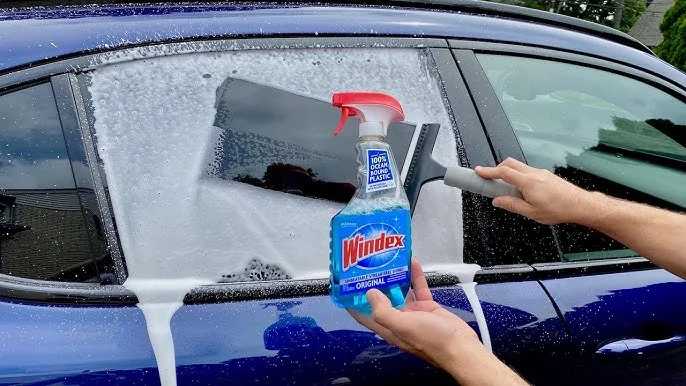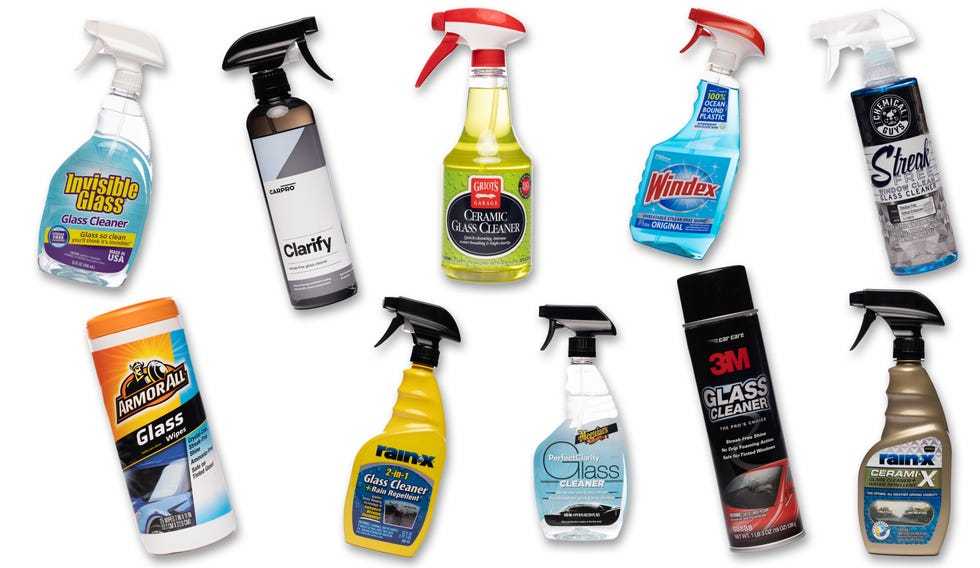Yes, car window tint can be applied on the inside of the window. Most tints are installed from the interior side, making it the standard method for privacy, heat reduction, and UV protection. Applying tint from inside the vehicle is straightforward and effective, provided the surface is properly prepared and the right materials are used.
If you’re wondering whether window tinting is done on the inside, the answer is yes—most window tints are installed from within the vehicle’s interior. This approach not only ensures a clean look but also makes the process easier to manage. Interior tinting offers benefits like enhanced privacy, temperature control, and protection against harmful UV rays. It’s a popular choice among car owners because it’s less visible from the outside and allows easier replacements or adjustments compared to exterior tinting. Whether you want to reduce glare or improve your car’s aesthetics, interior tinting is a practical, effective solution that’s widely used in the automotive world.
Applying window tint from the inside of a car is a common practice because it allows for precision and protection of the film during application. The process involves cleaning the window thoroughly, cutting the tint to fit, and then carefully adhering it to the inside surface. This method provides a smooth finish and makes it easier to maintain or remove the tint later. Additionally, interior tinting helps prevent scratching or damage from external elements, ensuring the film lasts longer. For anyone considering tinting their vehicle, understanding that most tints are meant to be installed from the interior can help in planning the process, choosing the right materials, and achieving a professional-looking result that enhances comfort and privacy.
Is Car Window Tint on the Inside?
Understanding the Basics of Car Window Tinting
Car window tinting involves applying a thin film to the glass to reduce sunlight and UV rays entering the vehicle. This film can be installed either on the inside or outside of the window. Most car owners prefer interior installation because it provides clean, smooth results.
Why Do People Ask if Car Window Tint is on the Inside?
Many car owners want to know whether the tint they see is applied on the inside or outside. The position of the tint can affect its durability, appearance, and the ease of maintenance. Knowing where the tint is placed helps in choosing the right type and ensuring proper care.
The Common Placement of Car Window Tints
Most commercial and DIY window tints are applied on the inside of the glass. This is because interior tinting offers several advantages like protection from weather, easier application, and a sleek look. Outside tinting, though possible, is less common and more difficult to maintain.
Advantages of Interior Car Window Tinting
Interior tinting provides a smooth finish that adheres directly to the glass. It protects the tint from weather elements such as rain, snow, and UV rays. Additionally, interior installation usually results in a longer-lasting product compared to external tints.
Protection and Durability
Because the film is shielded from the elements, interior tints tend to last longer. They are less vulnerable to scratching, peeling, or bubbling caused by weather exposure. This leads to fewer repairs or replacements over time.
Enhanced Appearance
Interior tinting offers a clean and uniform look, giving your vehicle a sleek appearance. It also prevents dirt and debris from affecting the adhesive, maintaining a neat look for years.
Ease of Application and Removal
Applying tint on the inside simplifies the process. It can be easily cleaned, maintained, or replaced without needing to remove the entire window. This saves time and money during maintenance or upgrades.
Is Tint on the Inside or Outside Better?
Choosing between interior and exterior tinting depends on some factors. Interior tinting is generally preferred for its protective qualities and aesthetic appeal. External tinting might be considered if you want quick installation or specific exterior designs.
Comparing Interior and Exterior Tints
| Feature | Interior Tinting | Exterior Tinting |
|---|---|---|
| Protection from weather | High | Low |
| Durability | Longer-lasting | Less durable due to exposure |
| Ease of cleaning | Simpler, since it’s inside | More challenging |
| Application | More straightforward | More complex and prone to damage |
Common Materials Used for Interior Window Tints
Interior window tints are created using different types of films, each with unique benefits.
Dyed Window Films
These films contain dye that absorbs solar heat and reduces glare. They are affordable and easy to install but may fade over time.
Ceramic Window Films
Involving ceramic particles, these tints block high levels of UV rays without compromising visibility. They are durable and highly effective but tend to be more expensive.
Metallized Window Films
These contain metallic particles that reflect heat and reduce glare. They are sturdy but can interfere with electronic signals in the vehicle.
How Is Car Window Tint Installed on the Inside?
Interior tinting requires precise application to avoid bubbles and wrinkles. Professionals clean the glass thoroughly before applying the film. They carefully cut the film to match the window’s shape before smoothing it onto the glass surface.
Step-by-Step Application Process
- Cleaning the window to remove dirt and grease
- Measuring and cutting the film to fit
- Spraying the inside of the window with a cleaning solution
- Peeling off the backing of the film
- Applying the film onto the glass, smoothing out air bubbles
- Using a squeegee to ensure full adhesion and remove moisture
- Drying and final inspection for quality control
Maintenance and Care for Interior Tints
Proper maintenance extends the life of your tinted windows. Use a gentle glass cleaner and soft cloth to clean the surface, avoiding abrasive materials. Refrain from rolling down windows immediately after installation to allow the tint to cure properly.
Cleaning Tips
- Use a mild, ammonia-free cleaner
- Avoid sharp tools or rough cloths
- Clean regularly to prevent dirt buildup
Potential Problems and How to Avoid Them
Poor installation or improper maintenance can cause bubbling, peeling, or discoloration. Always choose a professional for installation and follow recommended care instructions.
Related Topics
Legal Restrictions on Window Tinting
Different states and countries have regulations about tint darkness and reflectivity. Always check local laws before tinting your vehicle.
Cost of Interior Window Tinting
Prices vary depending on the film quality and vehicle size. On average, professional tinting costs between $100 and $400.
DIY vs Professionally Installed Tints
While DIY kits are available, professional installation ensures a flawless finish and longer-lasting results. Professionals also guarantee compliance with legal standards.
Environmental Benefits of Tinted Windows
Tinted windows can reduce air conditioning costs, decreasing fuel consumption and emissions. They also protect the vehicle’s interior from UV damage.
Summary
Interior car window tinting is a popular choice among vehicle owners. It involves applying a film on the inside of the glass, providing a sleek appearance and excellent protection from sunlight. The process is straightforward when performed by professionals and offers long-term benefits such as durability and easy maintenance. Choosing the right type of film and understanding proper care can keep your tinted windows looking great for years to come.
How to Choose the RIGHT Window Tint | Don't Make A Mistake
Frequently Asked Questions
Does window tinting affect the interior or exterior of a vehicle?
Most window tinting films are applied on the inside of the vehicle’s windows. This placement helps protect the film from environmental factors like rain, dirt, and UV rays, ensuring it lasts longer and maintains its appearance. Additionally, interior application allows for a smoother finish that reduces glare and provides a clean look inside the vehicle.
Can interior window tint be easily removed or replaced?
Yes, interior window tint can be removed or replaced with relative ease compared to exterior films. When you decide to change the tint, professionals usually peel off the existing film from the inside, which minimizes window damage and eases the reapplication process. Make sure to follow proper removal techniques to avoid damaging the glass or window seals.
How does interior window tint impact the vehicle’s visibility and safety?
Applying window tint on the inside ensures clear visibility from within the vehicle while maintaining privacy. Well-installed interior tint reduces glare and enhances safety by improving driver comfort and reducing eye strain. It also helps prevent shattering in case of accidents, as the film holds glass fragments together, contributing to overall safety.
What advantages does applying tint on the inside offer compared to exterior application?
Applying tint on the inside gives a cleaner, more uniform appearance since the film is protected from external elements like dirt, debris, and weather. It also simplifies the installation process, allows easier adjustments or removal, and minimizes the risk of damage to the film or vehicle paint that can occur with exterior installations.
Final Thoughts
Car window tinting is applied to the inside of the vehicle’s glass. Many car owners ask if it is indeed on the inside, and the answer is yes. This placement protects the tint from external damage and helps maintain privacy.
Understanding that car window tint on the inside is standard practice allows for proper maintenance. It also ensures the tint’s longevity and effectiveness. Therefore, knowing where the tint resides can help you care for it better.
In conclusion, the key point is that car window tint on the inside is common and intentional. It provides crucial benefits and requires proper upkeep. Now you know that car window tint on the inside is where it is installed.



